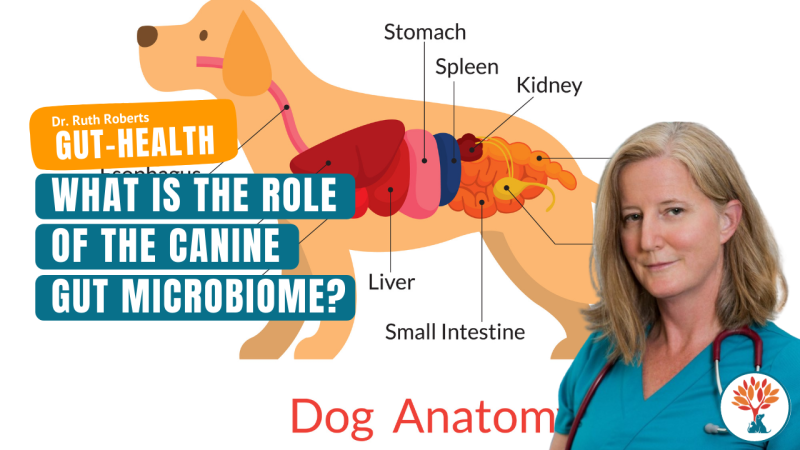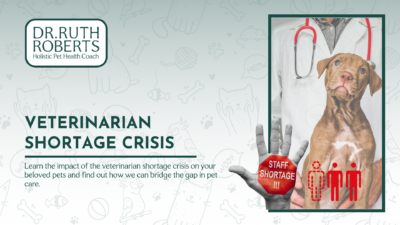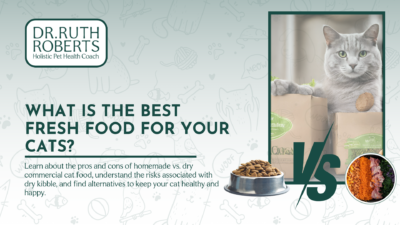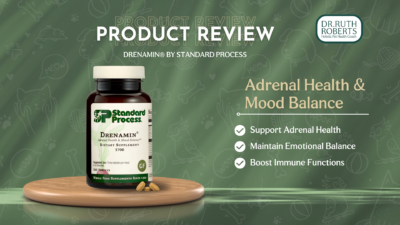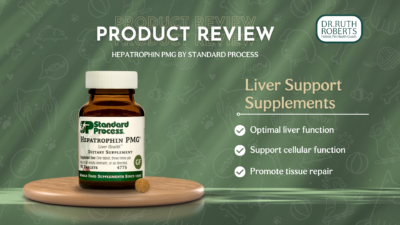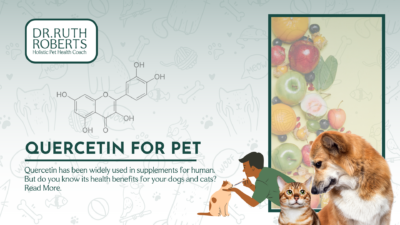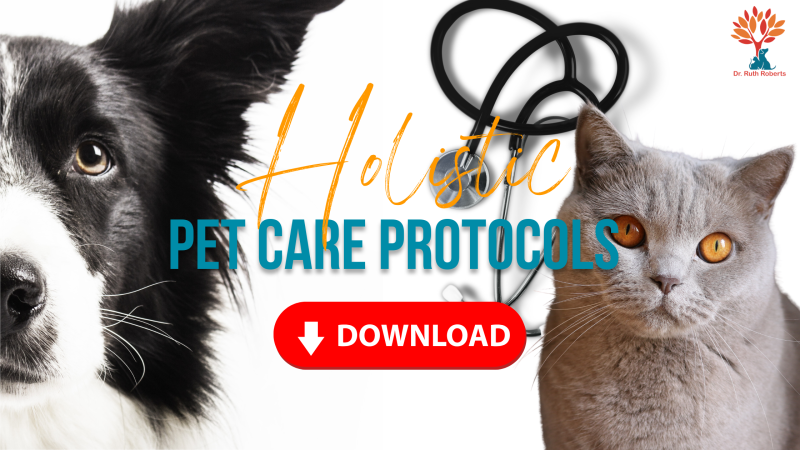The Role of the Canine Gut Microbiome
What if I told you that your dog or cat’s bad breath, anxiety, licking, itching, and sensitive stomach all starts with gut problems and in specific dysbiosis?
They’re all signs of bad gut health in dogs. Your Canine Gut Microbiome has a big role in your pet’s digestive system. Essentially it means that the microbiome in your pet’s gut is not healthy and the bad guys have taken control of the car and are driving your dog’s digestive and immune system. And who do you want driving?
So essentially, it means that the microbiome in your pet is not healthy and the microbiome are the good guys and the bad guys that live in your pet’s gut.
Basically, it means that the bad guys have taken control of the car and are driving your dog’s digestive and immune system. And who do you want driving the Avengers or Baron Zemo and the Masters of Evil? Probably not those guys.
Looking for some natural supplements to help support your pet’s gut? Got it! Check these out in our store.
But first, what is the healthy gut made up of?
Let’s start with the basics…
Your Dog’s Digestive Function
So, this is a very basic picture of the dog’s digestive tract and it starts in the mouth and in the oral cavity, we go down from there, into the esophagus, into the stomach, and then the liver. The liver actually interacts with the digestive system by dropping viola just after the duodenum which is the very early part of the small intestine and then the food goes down into the Jejunum then for further digestion and into the ileum.
Now, as we’re heading out of the small intestine into the large intestine, there’s a little thing called the cecum, which is similar to the appendix in humans and it’s bigger than the appendix, but not like the horse where it’s actually gigantic.
It doesn’t seem to have a great deal of function as it does in the horse, but it does appear to be involved in the immune system. So after the cecum and the ileum, so the ileocecal junction we had into the colon, which is where the majority of the microflora or microbiota does its work.
Pay Attention To The Colon.
So let’s check that picture out. So as you can see here, the majority of the microbiome count is actually down in the colon. But the count of microflora or microbiome is all through the digestive tract. It’s lowest in the stomach where it is higher in a mega in hydrochloric acid to aid in digestion.
And as we go down, it sort of starts to increase the small intestine. There’s something called the migrating motor complex and after you or your pet have not eaten for 90 minutes, it starts pushing food, literally down into the colon.
So let’s break this down a little further. When we look at across the section of the intestines, we can see it is divided into four parts. So if you take a cross section picture of the intestines which we have here, small intestine here, large intestine here, you can see that the Villi are in the small intestines than they are in the colon and that’s because that’s where the majority of the absorption of food happens. Largely the absorption that’s happening in the colon is just water.
So that’s why there’s a big difference there, but more important, the four parts; the mucosal layer… So again, it’s divided into four parts. So the mucosal layer where the mucosa, literally the part of the body sort of touching the outside is living and also where the majority of the activity happens.
And then the submucosa, which is where most of the immune activity happens in the gut, the mucosa or the muscular layer is after the mucosal layer and that’s literally what propels food through the GI tract. And then that’s all wrapped up by the serosa layer, which is really a protective layer around all the intestinal organ so that it basically doesn’t stick to each other.
Now breaking it down even further, we can see that in both the small intestine and the large intestine, there’s a lot going on.
There’s a mucus layer that protects the enterocytes or the small intestinal cells and the colonocytes or large intestine cells from the bad guys. There are bacteria present on the outside of the mucous layera and finally, we see that there are villi, which are these little absorptive fingers lined with enterocytes and colonocytes that help absorb the food and water.
This intestinal wall structure, we’ve got the villi and the microvilli and all that good stuff in the mucosal layer, the submucosa with all the blood vessels, the lymphatic tissue and the gut associated lymphatic tissue, which is where the immune system lives, and then various layers of muscle. So what’s supposed to happen is these food particles are supposed to be absorbed into these interest sites and then further processed and then dropped into the bloodstream and, or the gut associated lymphatic tissue.
How Leaky Gut Happens
But as we progress into leaky gut syndrome, that doesn’t happen. And so what ends up happening is as these tight junctions between the cells start to break down that prevention of stuff like bacteria, bad bacteria, viruses, things of that nature from getting into the body is messed up. And so things start coming into the body that should also improperly digest it.
Food particles can drop down in there because these tight junctions are simply no longer tight. And that creates a big problem, which we’re going to come back to in just a minute.
What is dog gut microbiome? The microbiome or gut microbiome is a collection of all the organisms living in the intestines of a person, cat or dog. And most commonly we think of them as being bacteria, but in truth, they are also fungi, viruses and bacterial phases as well as all of their genes and the pieces and parts of these organisms that are present as they break down.
And our understanding of the microbiome is progressing at a massively rapid pace but the number of organisms we’ve been able to identify this small is a small percentage of the total number that exist there. The microbiome helps to protect us against pathogenic bacteria, as well as it can help us process environmental substances and other substances that can create harm.
So we know that the microbiome is formed very early in life and that what you eat as a young person or puppy and kitten determines what kind of microbial diversity you have later in life.
So, what is the role of the gut microbiome?
The microbiome tests a lot to help us and we aren’t even aware of half of that.
I think at this point, certainly it assists with digestion. It helps to produce certain vitamins and really we had no idea what it was doing until research began in the late nineties.
The microbiome is essential to help us develop properly. And to develop an effective functioning immune system and protect us against pathogenic invaders. Many auto-immune diseases have been discovered to be improved by improving the function of the microbiome. And this illustrates the fact that it has more effect on our immune system than we previously understood.
What Happens When The Bad Guys Invade?
So why is gut health important for dogs to help you understand this? Let me explain what happens when Baron Zemo and crew are driving. When bad guys overrun the gut, this creates an imbalance in the types of bacteria that are present and the good guys, the Avengers, are not able to effectively control the Baron group.
As this progress, intestinal cells are damaged and destroyed, and the breakdown products create more inflammation in the gut, perpetuating the damage and speeding it up. As I mentioned earlier, tight junctions are broken down.
And so we start to see, as I said, more damage to the intestinal cells, break down products from these cells, from the bacteria, dying. All of this creates more inflammation of the gut, perpetuates the damage and speeds it up. It breaks down the tight junctions between the intestinal cells and when this happens, the gut associated lymphatic tissue is right underneath here, uh, underneath all this inflammation and yucky stuff going on.
And many of these inflammatory products are absorbed directly into the immune system, into the bloodstream, I should say. But more importantly, the immune system begins to respond to all these debris and the cellular junk, and gruesomeness floating around in there. The other part is that the commensal bacteria, the Avengers, the good guy also get absorbed and we can start to have reactions against them as well.
The Consequences Of Inflammation
So because of this, the immune system begins to create antibodies to all this stuff and attacks things that are truly harmless and actually helpful to the body. This bacterial imbalance in dogs can create auto-immune disease in the gut and food sensitivities to what’s being eaten frequently.
In humans, we know this can worsen autoimmune disease, such as type one diabetes, which is sadly now being diagnosed in dogs, rheumatoid arthritis. The other thing that can happen is that the inflammatory products created in and around the gut can go elsewhere in the body and then impact lots of other different organs, the skin, the brain, and then obviously the digestive system.
So this situation is commonly referred to as leaky gut syndrome or intestinal permeability. So here we see the opposite of a healthy digestive system.
The mucosal barrier has been broken down, there’s low diversity of the microbiota, and there’s an overabundance of pathogens present and all of this continues to destroy the cells of the intestinal system by degrading first the villi and then separating the tight junctions and ultimately destroying the enterocytes themselves.
So that there’s a complete lack of protection between the outside of the lumen of the intestine and the inside of the body. As a result, there’s inflammatory components are absorbed directly into the body, along with pathogenic bacteria, viruses, fungi, and all of the intendant inflammatory products, as I just mentioned, because there’s all this dead stuff floating around.
This is not good things to be absorbing. So as you can imagine, as the body sees more and more of this material that it uses for it creates a stronger and stronger reaction to all of this debris.
So, how does leaky gut create problems in other parts of the body?
Consider this, the microbiome is responsible for over 90% of our neuro-transmitters and over 75% of our immune function.
Again, who do you want in charge of the neurotransmitter production?
The Masters of Doom; creating anxiety, reactivity, and fear, or the Avengers; keeping things in balance, allowing normal neurotransmitter production. Many of you have tried home remedies for separation anxiety, and they may help, but they may never completely solved the issue.
So this dysbiosis is a really commonly overlooked reason why your rescue dog may be anxious at night and why many dogs are anxious all the time. Canine gut health can be a really important way to help dogs with stress.
Find natural calming products here that won’t compromise the gut >>
Now, if you’ve been wondering why your dog is itching and licking so much, and you’ve tried sensitive skin or sensitive stomach, dog food; there’s your answer.
The skin issue starts in the gut, atopy which is the diagnosis your pet often receives after multiple issues of skin issues is considered to be by some an autoimmune disease. And as a result, the first thing that most of that’s throughout it is some sort of immunosuppressive drugs like prednisone, atopica and more recently Cytopoint and Apoquel.
The Problem With These Drugs
The problem is that these drugs suppress the immune system and some more specifically than others, but nonetheless, it can’t be a good idea to start a two year old dog on an immunosuppressant drug and expect it to live a healthy life span. How does dysbiosis impacted G skin? Because the intestines are epithelial cells and the skin is an epithelial cell.
The immune system is geared to break down epithelial cells and dysbiosis. And as I said, skin cells are epithelial cells. So the immune system begins to attack them as well. Also, the lining of the respiratory tract and the anal glands are epithelial assesses while your dog is licking the floor and coughing too. Poor gut health in dogs is easy to understand when there are issues like chronic soft stool but not diarrhea as an issue.
Mucus In Poo? Why It’s Happening
And why your dog’s poop has mucus around it and why your dog regurgitates after it vomits or eats? There’s a ton of natural remedies for dog gut health and so many people searching for best, best vegetables for dogs with sensitive stomach or best dog food for best interiors with sensitive stomachs, et cetera.
But I think it’s really important to realize what’s going on underneath everything and to take a multi-pronged approach. I’ve seen so many people think they’ve found the best probiotic for dogs gut health, or best homemade dog food for sensitive stomach only to have these fail months or weeks later.
There’s tons of options for probiotics and gut health. But I think it’s more important to consider other factors. If you’re trying to sort out bad gut bacteria and dogs, you need to start with why.
Why is this happening?
When did it start?
When did it go from occasional diarrhea to my dog has had diarrhea for a week or the occasional itch to why is my puppy itching all the time?
Sometimes there’s a clear answer. Like it started after that round of antibiotics or it started after that run of prednisone. Sometimes I hear it was started after she was spayed. The other thing I hear is the vet said to speed the same thing for the rest of her life. Now, you remember how I said that if your dog’s gut is permeable, everything that he or she is eating every day is being turned into something that the immune system reacts to.
Rotation & Elimination Diet
This is where developing a rotation and elimination diet can be super helpful. Also testing for food sensitivities can help reveal what things are creating chronic irritation from the diet and improve the ability of the gut to heal by removing those same things; using things that reduce itchiness like high doses of Omega-3 fatty acids or quercetin and stinging nettles to relieve the itch.
And in some cases, the GI issue. But most importantly, if we don’t start working directly on the dysbiosis, we may be on wheels for a very long time. So let’s break down a couple of options.
First of all, how can I strengthen my dog’s gut microbiome?
Well, you can. So you have your dog, cats, microbiomes sequence. AnimalBiome has been around for years and has a dog microbiome test kit, and also a cat microbiome test kit. And this could be a huge help in figuring out what’s going on.
It can be used to help decide what foods may be a benefit in actually repairing the gut and also their fecal transplant pills or GI supplement. Sometimes this approach fails and often it’s because we’re not feeding the bugs properly; the good guys that is. We can put a ton of probiotic organisms into ourselves, into our pets but again, if we’re not giving them the proper food or probiotics, we often get poor results.
Two Thumbs Up For Prebiotics
Now, as I mentioned, prebiotics are the food that feeds the probiotic organisms and probiotics are are different types of fiber that are often helpful to us, but literally are the best food source that the good guys, the Avengers, needed in order to thrive. So …
- Jerusalem artichokes
- chia seeds
- flax seeds
- and psyllium
- as well as synthetic fibers or fibers that are engineered from everyday veggies are good examples.
There’s also a ton of prebiotic and probiotic supplements available often called synbiotics. In many of my patients I’ve seen synbiotics really create problems when you get ahold of them because that makes them happy and grow too.
So it can create some real problems in terms of discomfort of gas, bloating, and ultimately diarrhea. Some of that admittedly is from the good guys starting to say, Ooh, dinner’s here and thriving and growing. And then having a huge die-off of the pathogenic bacteria or the masters of doom. So probiotics, again are the organisms that form the microbiome.
There’s many approaches to restoring the probiotic organisms in the gut so that the Avengers in charge. So fermented foods such as:
- kefir
- yogurt
- kombucha
- sauerkrauts are great examples of foods that we can add to our dog’s diet.
(Note: Sauerkraut is generally not well received by most dogs.)
And then there are high dose multi-strain probiotics, which is what I had used for many years. And then there are sporulated probiotic organisms that act more as a scaffold for the microbiome, and I’ve been using those more frequently with better results. And then lastly, there is a fecal transplant. This can be done either with fresh stool, with freeze dried FMT pills available from AnimalBiome or freeze dried fecal transplant material that’s given by enema.
Postbiotics – Yup, I said POST…
So there is one more new kid on the block and that’s postbiotics. Postbiotics are formed when probiotic organisms die and break down into smaller parts, such as amino acids, cell wall fragments, and lysates, which can offer health benefits.
These are postbiotics or literally after life.
They are very common in the healthy GI tract as the microbiome does its thing, but now they’re being developed as supplements. One of the commonly used postbiotics on the human side is called Epicor. This little picture kind of breaks things down a bit more for you.
But basically what postbiotics can do is to help scratch that. There’s more than a dozen published human studies on for showing a wide range of real life health benefits.
And these include maintaining daily immune health, allergic rhinitis, and then monitoring the gut microbiome and reducing discomfort and constipation, as well as supporting digestive health.
Overall it’s made from a natural fermentation process of, which is what’s found in nutritional yeast. The Epicore post-supplement supports a healthy gut microbiome which will support a healthy immune response. Interestingly, it is made by Cargill, which was sort of shocking, but there you go. The food giant is actually starting to figure out how to use functional foods.
One study in particular found that fermentation has positive effects on the gut health and immune function in dogs by shifting the gut microbiome positively into the right direction, helping the Avengers get into charge and by elevating immune capacity and most importantly, decreasing inflammation.
So that sounds just like the tool that the Avengers need to help defeat the Masters of Doom. One other thing I’d like to point out is that there’s lots of rumors going on around there that AnimalBiome was bought out in truth. What happened is that Cargill saw that AnimalBiome was having a big impact on gut health for dogs and cats.
And so they made a very large investment so that AnimalBiome could get the research done that would help us understand further how important the microbiome is and how we can manipulate it to help sick pets. But as a result of this collaboration, we now have a postbiotics supplement called ImmuneShield.
So what is good for dog’s digestive system?
Once you’ve tried home remedies for leaky gut and dogs, and you haven’t gotten anywhere, here are my suggestions for making a fresh start.
First, feed a Whole Food diet. I’m not a big fan of raw diets. And I think that incorporating fresh vegetables and whole grains is very important to feed the microbiome properly.
And that’s part of why I invented the Original Crockpet Diet.
Second, once you’ve got the diet down and you’re still seeing issues, then I would consider testing for food sensitivities. I’ve used the life stress scan. Life stress scan test for migration peaks for many years as a roadmap for sorting out food sensitivities.
It’s pretty cool because you are able to do this at home with the saliva and hair sample. Third step is to use supplements that address symptoms like itchiness, inflammation, diarrhea, and what you need here clearly depends on what issues you’re trying to help your pet with.
Fourth, support liver function.
If the liver is able to process waste products more efficiently, it prevents them from being dumped into the gut and damaging the intestines and microbiome.
Fifth, if your pet has ongoing issues, then consider doing a microbiome analysis. Also consider adding a GI supplement like the AnimalBiome fecal transplant or a Spore-related probiotic like either Fidospore, or MegaSpore biotic. Support the gut with high doses of Omega-3 fatty acids to help reduce generalized inflammation and improve the ability of the enterocytes and colonocytes to repair.
Now by high doses, I mean really high doses. So something on the order of 150 milligrams per kilogram of body weight.
And so for the average 50 pounds dog, that works out to about, uh, 2,800 milligrams per day. So that’s pretty huge.
So step six would be to use things like MegaMucosa or Heartburn TX that will help repair the enterocytes and colonocytes as well as improve the mucosal layer in the intestines.
Step seven…
Adding a whole food nutrition, such as standard process supplements and tech support to help heal the gut and provide the raw materials needed for ongoing support and repair.
Number eight, if you’re having to sort out what’s going to be the most appropriate thing for your pet, I am always available for one-to-one consultations.

